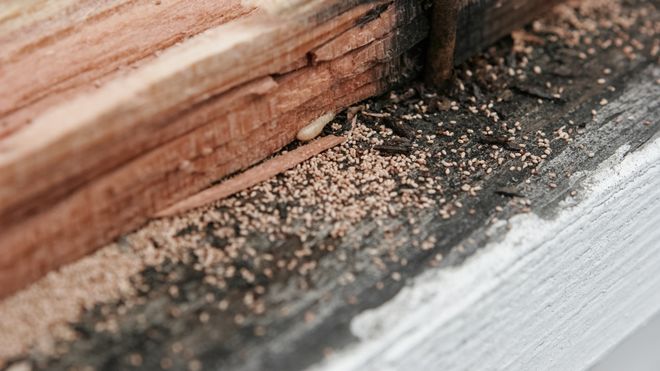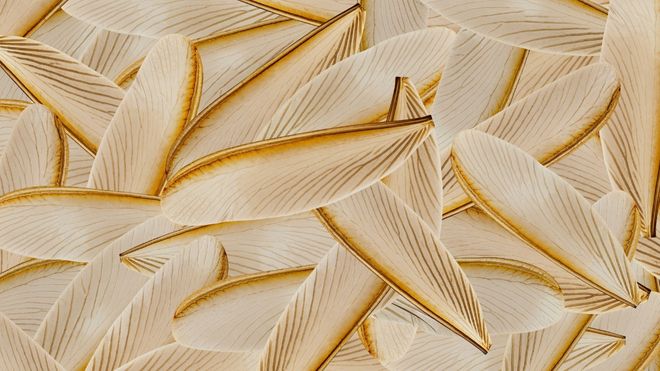Termite Infestation And Treatment
How to Spot a Termite Infestation in Your Home—and What to Do About It

A colony of termites can literally destroy the wood structure of your home
If you're a homeowner in California, chances are you've had to deal with termites at some point.
Unfortunately, these little pests can cause a lot of damage to your home if they're not dealt with quickly and effectively.
In this article, we'll show you how to spot a termite infestation in your home and what to do about it.
Types of Termites
There are two types of termites that infest home in San Jose CA and the rest of the San Francisco Bay area - Drywood Termites and Subterranean Termites.
Drywood termites (Incisitermes minor) - Western drywood termites are California's second most significant termite pest, after the subterranean termite. They are also the most widespread species of drywood termite. This native insect has been around for millions of years and is most commonly found in dead wood along rivers, washes, or arroyos. They are common along the Pacific coast, which extends into the Central Valley of Southern California and the deserts.
Drywood termites live and breed in the wooden structures of your home. Once they get going, they work their way through the structural members of your home.
Subterranean termites (Family Rhinotermitidae) - Naturally, subterranean termites live below the surface of the ground that your home sits on. But, they work inside the structural members of your home.
They are the most destructive termite species. To reach food sources and keep out of the open air, these termites create distinctive tunnels that are often called "mud tubes". They consume wood 24 hours per day, seven days a week, and use their saw-toothed jaws for small pieces of wood. Subterranean termites can cause structural damage to a structure and even complete collapse. Subterranean termites pose a threat to homeowners in all 50 states, except Alaska.
What to Look For
The first thing you need to do is look for signs of termites around your property. These include things like small piles of sawdust near wood beams.
Termites ingest cellulose-based materials like wood, paper, and cardboard. As they eat through these materials, they excrete a substance called frass (a mix of feces and bits of wood). If you see small piles of frass around your property, it's a good indication that you have termites.

Wherever termite frass is seen, termites are nearby.
Another sign of termites is wings near doorways or windows.
During the springtime, mature termites leave their nests in search of mates.
Once they find a mate, they shed their wings and start building a new nest.
If you find wings near any openings in your home, it's a good indication that there are termites nearby.

If you see these around doorways or windows, termites are nearby.
Termite Treatment - Professional Termite Exterminator
Termites can cause a lot of damage to your home if they're not dealt with quickly and effectively.
In this article, we showed you how to spot a termite infestation in your home and what to do about it.
If you suspect you have termites on your property, the best course of action is to call a professional pest control company to come out and take a look.
They will be able to confirm whether or not you have an infestation and recommend the best course of treatment.
In most cases, treatment will involve using chemicals to kill the termites.
Wrapping It Up
The pest control company will likely also recommend some preventative measures you can take to keep termites from coming back in the future.
What to Do Now
For termite infestations, it’s best to leave treatment to professional termite treatment exterminators. Call or click below...or use our contact page.
Simply call or click to let us take a look...
For the fastest response
Use this form anytime...
FAQs about Termite Infestation and Treatment
Q: What are the signs of a termite infestation in my home?
A: Signs of a termite infestation include the presence of termite swarmers or discarded wings, mud tubes on walls or foundations, hollow-sounding or damaged wood, frass (termite droppings), and sagging floors or ceilings.
Q: How do termites enter my home, and what attracts them?
A: Termites can enter your home through small cracks or gaps in the foundation, walls, or around pipes. They are attracted to wood, moisture, and warmth, making your home an ideal environment for them to thrive, especially if you have damp or decaying wood.
Q: How can I prevent termite infestations in my home?
A: To prevent termite infestations, eliminate wood-to-soil contact, repair any water leaks or moisture issues, use termite-resistant materials for construction, install termite barriers or shields, and schedule regular professional termite inspections to catch potential infestations early.
Q: What are the most effective methods for treating a termite infestation?
A: The most effective methods for treating a termite infestation include liquid termiticides, termite baits, and fumigation. It's crucial to identify the termite species and the extent of the infestation to apply the most effective treatment. In most cases, professional help is necessary to ensure complete eradication.
Q: Are DIY termite treatments safe and effective, or should I hire a professional termite exterminator?
A: DIY termite treatments can be challenging due to the difficulty in detecting and reaching termite colonies. In most cases, professional exterminators are recommended for more efficient and long-lasting results. They have the necessary tools, knowledge, and experience to treat termite infestations effectively and safely.
